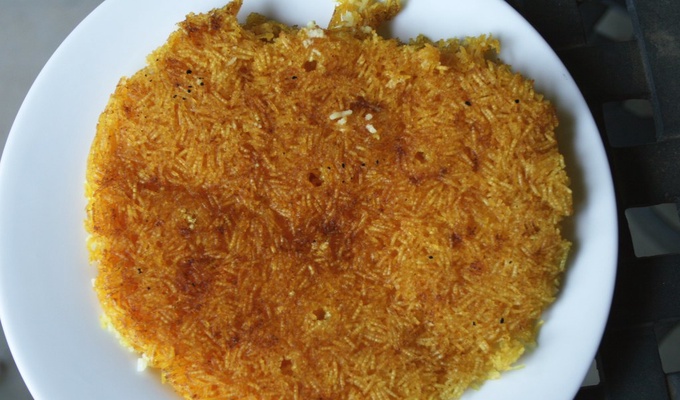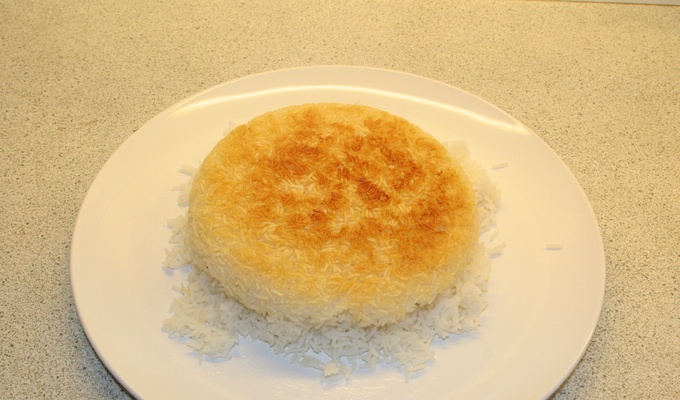Scorched rice, also known as crunchy rice, is a thin crust of slightly browned rice at the bottom of the cooking pot. It is produced during the cooking of rice over direct heat from a flame.
Many cultures have their own traditions of scorched rice. These include:
- Cape Verde: kokorota
- China: guōbā
- Madagascar: apango
- Indonesia: intip
- Iran: tahdig
- Iraq: hikakeh
- Japan: okoge
- Korean: nurungji
- Spain: socarrat
- Vietnam: cơm cháy
Latin America
Scorched rice is known as cucayo, pegao, cocolón (Ecuador), concolón, raspa, raspado, graten (Haiti), bunbun (Jamaica) and concón (Dominican Republic) in the Caribbean. In Colombian cuisine, scorched rice is called cucayo, pega or pego. It is often consumed with vegetable toppings as a cracker, or served in soups. It is also eaten alone or used to make leftovers. In Dominican cuisine, scorched rice is called concón, though this word can refer to the crunchy, toasted underside of other food types, as well. In Puerto Rican cuisine, scorched rice is called pegao (shortened "pegado", "stuck"). In Ecuador, kukayu (cucayo) is the name given to food items that are meant for travel, derived from kukayu (Quechua for a ration of coca) .In Trinidad and Tobago cuisine and other English speaking Caribbean countries, scorched rice at the bottom of the pot is called bun bun.
Myanmar (Burma)
In the Burmese language, scorched rice is called htamin gyo (ထမင်းချိုး). It is commonly found in hsi htamin, glutinous rice cooked with turmeric and oil.
Philippines
Tutong (Tagalog) or dukót (Cebuano, "to stick") is used for a wide variety of dishes in Philippine cuisine, even as flavouring for ice cream. Some people may consider it a poverty food, but others eat it because they enjoy the taste.

